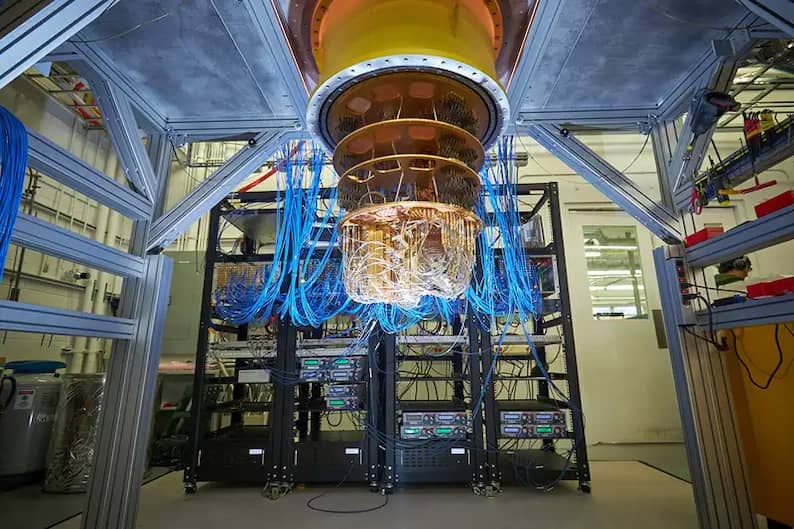The D-Wave quantum supercomputer only needs a second to process calculations that would normally take a computer 10,000 years to solve.
According to Bloomberg, the American company Google owns more computers than any other business in the world. Despite the abundance of computing equipment, Google researchers still have difficulty trying to solve complex problems, especially those related to artificial intelligence (AI).
“We had problems that conventional computers couldn’t solve. We wanted to see the future with non-traditional computing,” said John Giannandrea, Google’s vice president of engineering.
The type of computer that Google is increasingly using is called a quantum computer. The system takes advantage of features of quantum mechanics, the science concerned with how tiny atoms and molecules work. They can help solve problems that regular computers can’t handle.
During a press conference on December 8 in Mountain View, California, USA, Google announced that the company is working with the US Space Agency (NASA) and D-Wave Systems, a manufacturer of quantum computers, to Build a computer room. This partnership has been going on for two years, but recently, thanks to a newly upgraded larger D-Wave computer, the researchers got some positive results from the experiment.
Google’s quantum computer. Image: Google.
According to Google, the calculations in the test showed that the D-Wave computer completely eclipsed the regular computer when performing some requests. In one test, D-Wave took just one second to process calculations that would normally take a computer 10,000 years to solve. Google says quantum computers can make many requests 100 million times faster than conventional computers. This is really a rare speed in the history of computer technology.
D-Wave computers are very different from conventional computers. It can only perform a limited number of quantum calculations, and very few people know how to tune the problem to the machine. Therefore, Google is responsible for the operation of D-Wave. “We needed to make it more receptive to a real-world problem when it was on the engineer’s desk,” said Hartmut Neven, Google’s engineering lead.
Google is applying tough optimization math to some of the high-end AI technologies people use like image search engines and speech recognition. But the above operations are done through thousands of ordinary computers connected to each other. The company expressed hope to be able to use quantum computers to support conventional computer systems and achieve many breakthroughs for today’s difficult problems. “We may need a few years before this work makes a difference to Google products” predicted Giannandrea.
D-Wave computers are also being used by NASA to improve simulation and coding technology. D-Wave works on quantum bits, called qubits. Unlike the usual binary coefficient, which is required to be 1 or 0, a qubit can be 1, 0 or the in-between state. The computer can simultaneously consider a large number of solutions to a problem. This feature makes quantum computers very suitable for processing optimization problems. For example, one person might be looking for the best way to route thousands of planes to and from an airport.
Neven spends most of his time working with D-Wave computers, and he sees them as having great potential in areas such as improving battery technology, desalination equipment, and solar cells. The uniqueness of qubits allows for the discovery of the material’s properties, leading to more efficient industrial machines.
“As we all know, since the dynamic nature of nature is quantum physics, a process based on quantum physics is required to describe the composition of the universe. Sooner or later, Quantum computers will become the tool of choice to solve these problems,” asserts Neven.
